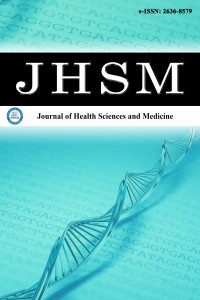1.
Buxton AE, Ellison KE, Kirk MM, et al. Primary prevention of sudden cardiac death: trials in patients with coronary artery disease. J Interv Card Electrophysiol. 2003;9(2):203-206. doi:10.1023/a:1026236524273
2.
Meissner MD, Akhtar M, Lehmann MH. Nonischemic sudden tachyarrhythmic death in atherosclerotic heart disease. Circulation. 1991;84(2):905-912. doi:10.1161/01.cir.84.2.905
3.
Virmani R, Burke AP, Farb A. Sudden cardiac death.Cardiovasc Pathol. 2001;10(5):211-218. doi:10.1016/s1054-8807(01)00091-6
4.
Das MK, Suradi H, Maskoun W, et al. Fragmented wide QRS on a 12-lead ECG: a sign of myocardial scar and poor prognosis. Circ Arrhythm Electrophysiol. 2008;1(4):258-268. doi:10.1161/CIRCEP.107.763284
5.
Das MK, Michael MA, Suradi H, et al. Usefulness of fragmented QRS on a 12-lead electrocardiogram in acute coronary syndrome for predicting mortality. Am J Cardiol. 2009;104(12):1631-1637. doi:10.1016/j.amjcard. 2009.07.046
6.
Das MK, Saha C, El Masry H, et al. Fragmented QRS on a 12-lead ECG: a predictor of mortality and cardiac events in patients with coronary artery disease. Heart Rhythm. 2007;4(11):1385-1392. doi:10.1016/j.hrthm. 2007.06.024
7.
van Dongen IM, Elias J, Meijborg VMF, et al. Electrocardiographic changes after successful recanalization of a chronic total coronary occlusion. A systematic review and meta-analysis. Cardiovasc Revasc Med. 2018;19(2):221-228. doi:10.1016/j.carrev.2017.09.004
8.
Goodhart DM, Hubacek J, Anderson TJ, et al. Effect of percutaneous coronary intervention of nonacute total coronary artery occlusions on QT dispersion. Am Heart J. 2006;151(2):529.e1-529.e6. doi:10.1016/j.ahj. 2005.08.010
9.
Kadı H, Ceyhan K, Koç F, Celik A, Onalan O. Relation between fragmented QRS and collateral circulation in patients with chronic total occlusion without prior myocardial infarction. Anad Kardiyol Derg. 2011;11(4):300-304. doi:10.5152/akd.2011.079
10.
Suzuki M, Nishizaki M, Arita M, et al. Increased QT dispersion in patients with vasospastic angina. Circulation. 1998;98(5):435-440. doi: 10.1161/01.cir.98.5.435
11.
Das MK, Khan B, Jacob S, Kumar A, Mahenthiran J. Significance of a fragmented QRS complex versus a Q wave in patients with coronary artery disease. Circulation. 2006;113(21):2495-2501. doi:10. 1161/CIRCULATIONAHA. 105.595892
12.
Sianos G, Werner GS, Galassi AR, et al. Recanalisation of chronic total coronary occlusions: 2012 consensus document from the EuroCTO club. EuroIntervention. 2012;8(1):139-145. doi:10.4244/EIJV8I1A21
13.
Rentrop KP, Cohen M, Blanke H, Phillips RA. Changes in collateral channel filling immediately after controlled coronary artery occlusion by an angioplasty balloon in human subjects. J Am Coll Cardiol. 1985; 5(3):587-592. doi:10.1016/s0735-1097(85)80380-6
14.
Seiler C, Stoller M, Pitt B, Meier P. The human coronary collateral circulation: development and clinical importance. Eur Heart J. 2013; 34(34):2674-2682. doi:10.1093/eurheartj/eht195
15.
Meier P, Hemingway H, Lansky AJ, Knapp G, Pitt B, Seiler C. The impact of the coronary collateral circulation on mortality: a meta-analysis. Eur Heart J. 2012;33(5):614-621. doi:10.1093/eurheartj/ehr308
16.
Okin PM, Devereux RB, Howard BV, Fabsitz RR, Lee ET, Welty TK. Assessment of QT interval and QT dispersion for prediction of all-cause and cardiovascular mortality in American Indians: the strong heart study. Circulation. 2000;101(1):61-66. doi:10.1161/01.cir.101.1.61
17.
Day CP, McComb JM, Campbell RW. QT dispersion: an indication of arrhythmia risk in patients with long QT intervals. Br Heart J. 1990; 63(6):342-344. doi:10.1136/hrt.63.6.342
18.
Janse MJ, Wit AL. Electrophysiological mechanisms of ventricular arrhythmias resulting from myocardial ischemia and infarction. Physiol Rev. 1989;69(4):1049-1169. doi:10.1152/physrev.1989.69.4.1049
19.
Buja G, Miorelli M, Turrini P, Melacini P, Nava A. Comparison of QT dispersion in hypertrophic cardiomyopathy between patients with and without ventricular arrhythmias and sudden death. Am J Cardiol. 1993; 72(12):973-976. doi:10.1016/0002-9149(93)91118-2
20.
Barr CS, Naas A, Freeman M, Lang CC, Struthers AD. QT dispersion and sudden unexpected death in chronic heart failure. Lancet. 1994; 343(8893):327-329. doi:10.1016/s0140-6736(94)91164-9
21.
Elsässer A, Schlepper M, Klövekorn WP, et al. Hibernating myocardium: an incomplete adaptation to ischemia. Circulation. 1997;96(9):2920-2931. doi:10.1161/01.cir.96.9.2920
22.
Arab D, Valeti V, Schünemann HJ, López-Candales A. Usefulness of the QTc interval in predicting myocardial ischemia in patients undergoing exercise stress testing. Am J Cardiol. 2000;85(6):764-A8. doi:10.1016/s0002-9149(99)00858-9
23.
Oppenheimer SM. Neurogenic cardiac effects of cerebrovascular disease. Curr Opin Neurol. 1994;7(1):20-24. doi:10.1097/00019052-199402000- 00005
24.
Yıldırım S, Kaşıkcı MT. Examination of troponin levels and electrocardiographic changes in patients with acute ischemic stroke. Muğla Sıtkı Koçman Uni Med J. 2020; 7(2): 65-69.
25.
Basaran Y, Tigen K, Karaahmet T, et al. Fragmented QRS complexes are associated with cardiac fibrosis and significant intraventricular systolic dyssynchrony in nonischemic dilated cardiomyopathy patients with a narrow QRS interval. Echocardiography. 2011;28(1):62-68. doi:10.1111/j. 1540-8175.2010.01242.x
26.
Calore C, Cacciavillani L, Boffa GM, et al. Contrast-enhanced cardiovascular magnetic resonance in primary and ischemic dilated cardiomyopathy. J Cardiovasc Med (Hagerstown). 2007;8(10):821-829. doi:10.2459/JCM.0b013e3280101e3c
27.
Chatterjee S, Changawala N. Fragmented QRS complex: a novel marker of cardiovascular disease. Clin Cardiol. 2010;33(2):68-71. doi:10.1002/clc.20709
28.
Mahenthiran J, Khan BR, Sawada SG, Das MK. Fragmented QRS complexes not typical of a bundle branch block: a marker of greater myocardial perfusion tomography abnormalities in coronary artery disease. J Nucl Cardiol. 2007;14(3):347-353. doi:10.1016/j.nuclcard.2007. 02.003
29.
Cetin M, Kocaman SA, Canga A, et al. The independent relationship between systemic inflammation and fragmented QRS complexes in patients with stable angina pectoris. Kardiol Pol. 2012;70(7):668-675.
30.
MacAlpin RN. The fragmented QRS: does it really indicate a ventricular abnormality? J Cardiovasc Med (Hagerstown). 2010;11(11):801-809. doi: 10.2459/JCM.0b013e32833b9816

